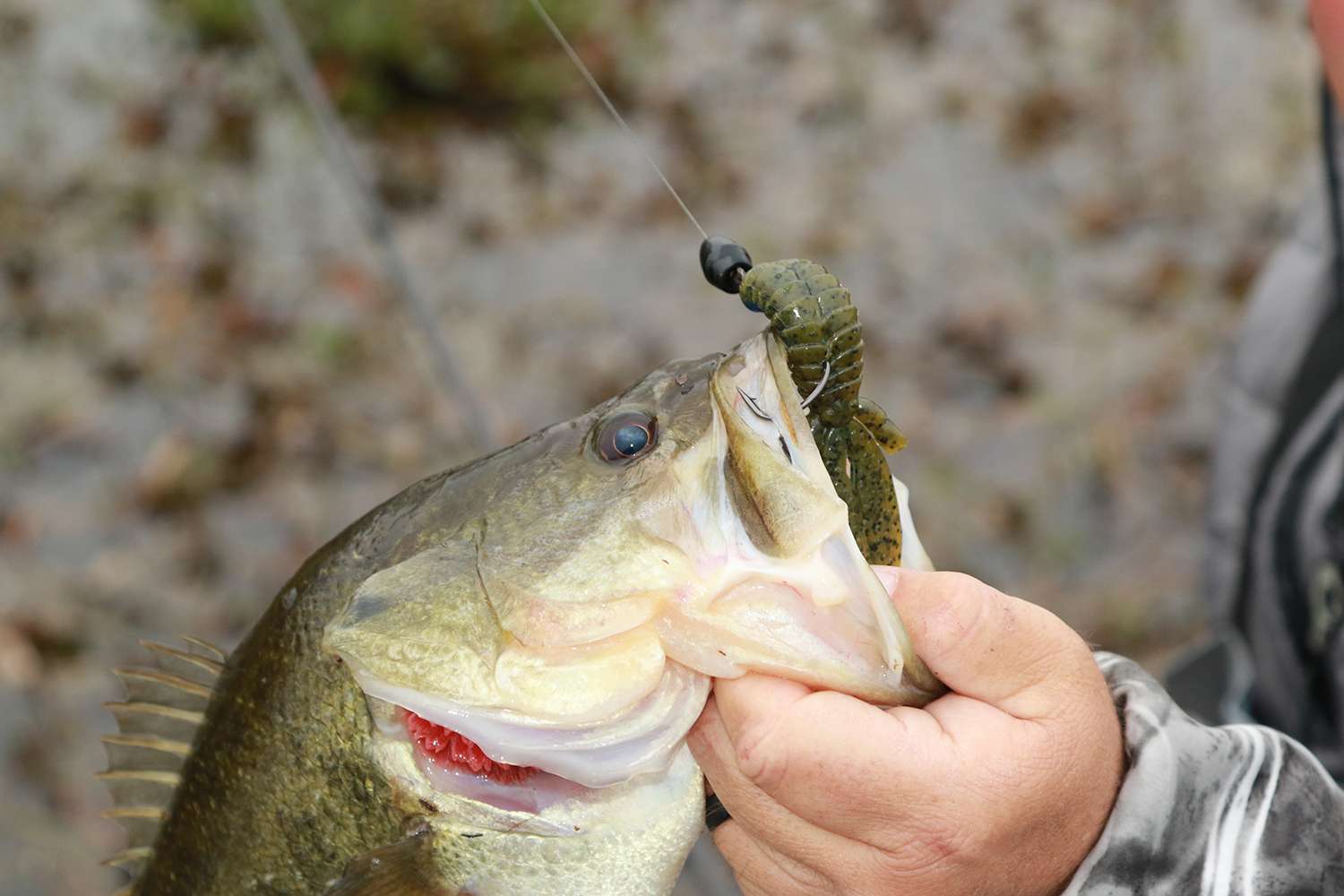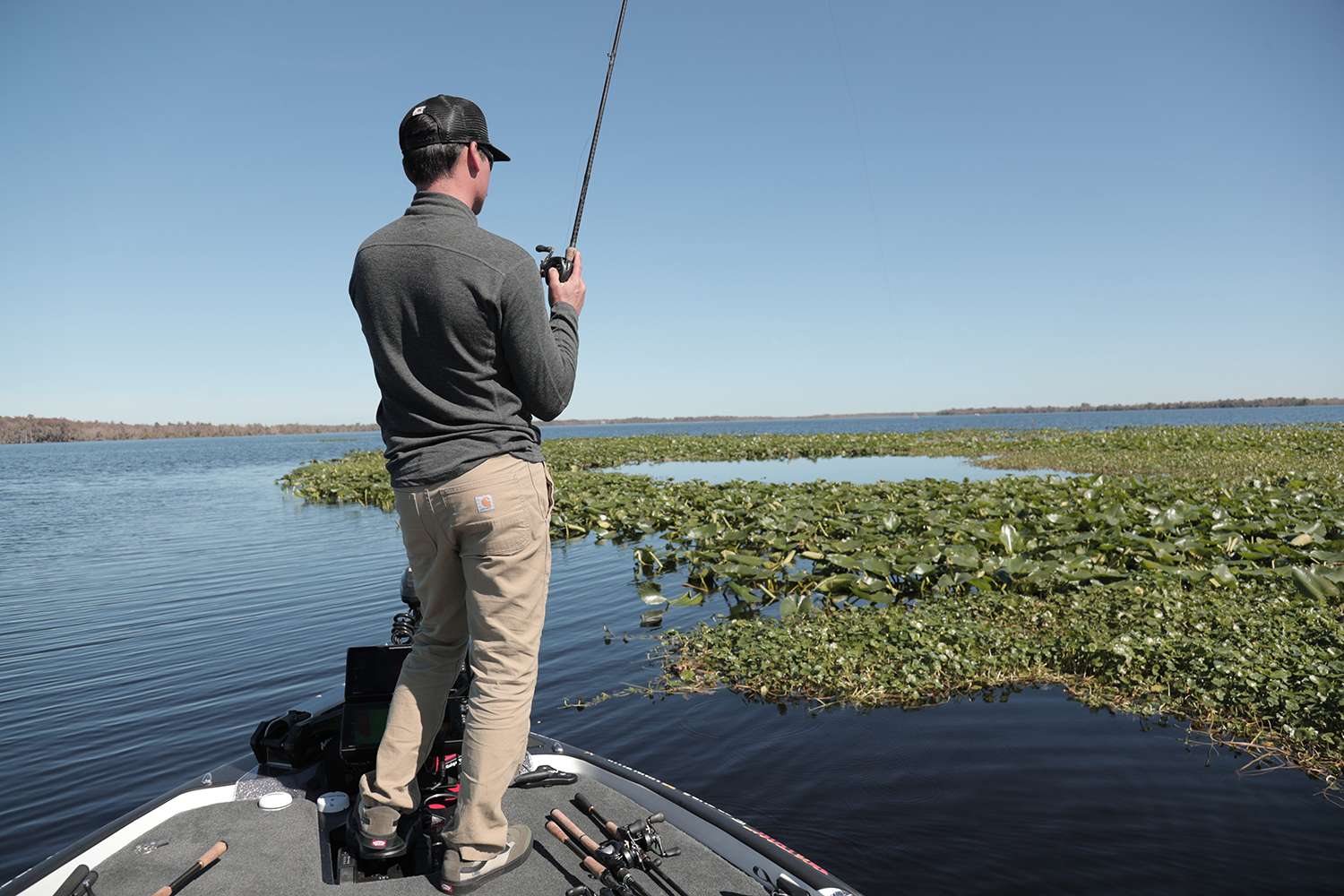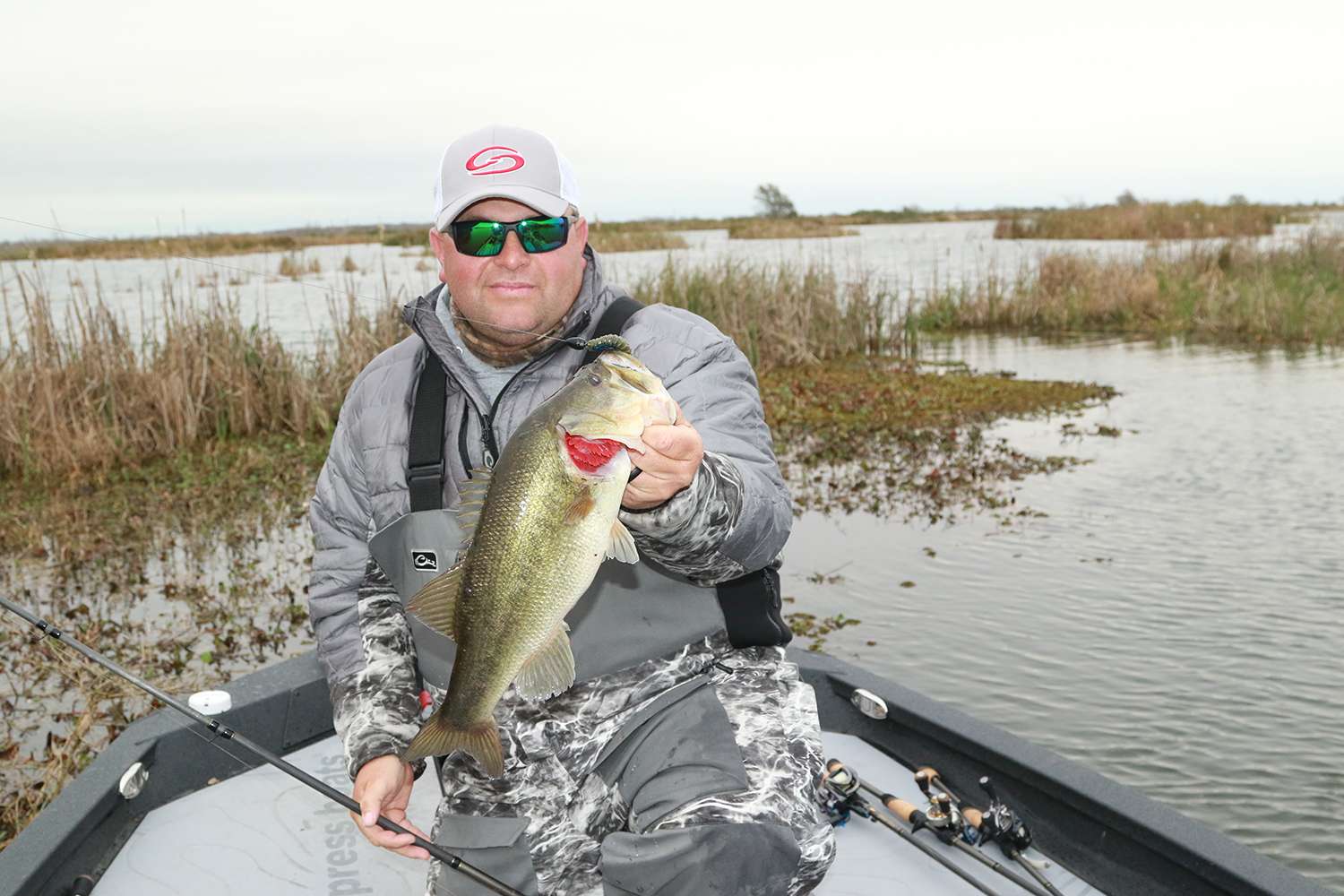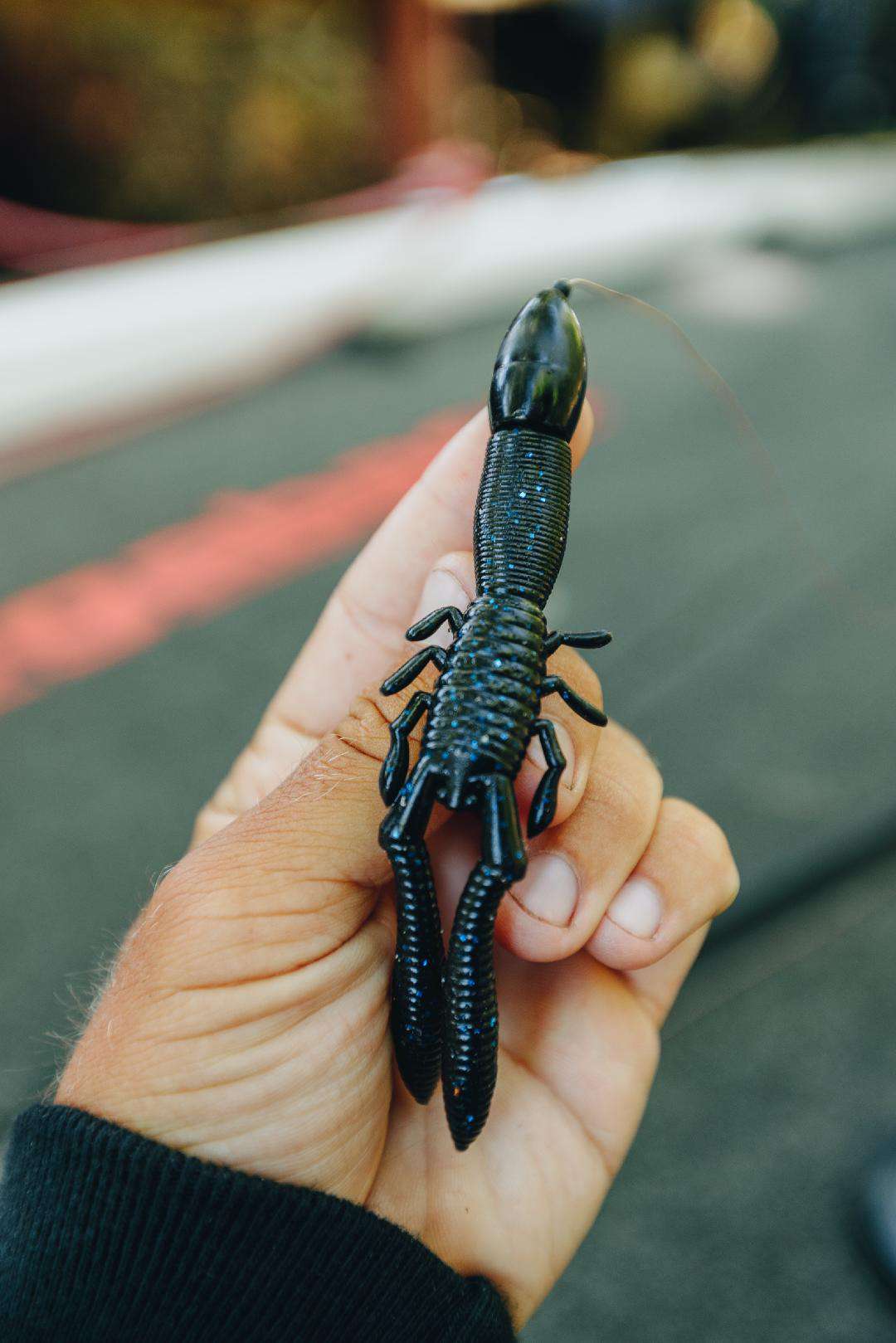
Okay, so punching is not like the drop shot’s technically proficient finesse, it’s not the laborious effort to find the precisely perfect jerkbait color, and it’s not the incredibly diverse array of spinnerbait options.
Yeah, punching is pretty blue collar. Not fancy stuff, but that doesn’t mean it’s a one-size-fits-all kind of deal.
“If you talk about not being one-dimensional, why do we carry 25 different crankbaits?” Elite pro Bill Lowen said. “Just like there’s no crankbait that does everything, there’s no punchbait that does everything. You gotta keep an open mind.”
Sure, the simple definition of driving a piece of plastic into dense cover seems pretty straightforward, but simplicity and options are not mutually exclusive.
Would punching the same bait in the same color everywhere you went produce bites? It could. After all, punching generally startles a fish into instantaneously biting out of A) defense or B) meal acquisition.
All this to say that consistent success demands constant analysis — even for the decidedly low-maintenance punching technique. Each scenario has its particulars, but here’s some food for thought.
Covert attack
The mere fact that most punchers keep it simple means a lot of repetition, right? Well, Chris Zaldain’s West Coast upbringing taught him the value of tiptoeing where others stomp; whispering where shouting’s common.
“I like subtle,” Zaldain said. “It’s the same premise as a stick worm, like the Senko. I just like subtle vibrations under water, especially when I’m targeting 7-, 8-, 9-pound fish.
“They’ve been around the block a time or two, and they’ve seen a bunch of different lures, so the more subtle, the better. We’re putting a bait right where they live, so it doesn’t take a lot of action. We’re not calling fish over from 10 to 20 feet like we would on a point with a jig.”

Zaldain’s go-to: The 4-inch Megabass Bottle Shrimp. The ribbed body and buoyant claws mimic a crawfish profile, while the relatively small legs keep the vibration to a minimum.
“This bait is loaded with salt, and it puts off a nice wave, much like a soft plastic stick worm,” Zaldain said. “These two arms don’t have any pincer or curl type features; they’re just straight arms with mass.
“When we’re targeting (big fish), it’s up to me to put a bait within a couple feet of the fish, and every time I punch it through cover, the Bottle Shrimp sends off a subtle vibration that the fish like.”
When to Wiggle: For active fish, Lowen’s first choice is a Strike King Rage Tail Structure Bug, a limber-legged bait that performs well when fish are digging the aggressive look and slower fall created by its kicking motion. When fishing pressure or weather conditions have the fish in a pouty mood, the Strike King Rodent’s minimal action and straight fall tend to do the trick.
Small thoughts, big results: Cutting his teeth on the Ohio River, Lowen’s also keen on managing tough times by keeping it small and stealthy. He’s never been a big fan of huge, bravado-laden punch weights, so while others are jamming full-size baits through cover with 2-ouncers, he finds 3/4- to 1-ounce Reins tungsten weight his comfort zone.

“I’ll fish whatever I have to fish, but I’ll use the lightest weight I can get away with because you tend to lose a lot of big fish by blowing their mouth open when you set the hook with a bigger weight,” Lowen said. “A lot of times what I’ll do is trim a 4-inch Strike King Rodent and rig it on a 4/0 Hayabusa HD straight shank flipping hook. That gives me the bulk of the full-size Rodent with a shorter profile that slips through cover better.”
Zaldain admits he likes the smooth glide of the original 4.2-inch Reaction Innovations Sweet Beaver, but he often finds himself opting for the 3.5-inch Smallie Beaver. That’s less about presentation than practicality.
“It’s not like ‘They’re not biting, so I’m going to go to the finesse size,’ I think it’s more when my regular size Beaver isn’t getting through the stuff like I want it to,” Zaldain said. “So, instead of going up in weight and decreasing my chances of landing the fish because a huge weight is there, I’ll downsize the bait so there’s less material there, so the hole I’m punching through doesn’t have to be as big, so you’re more efficient without having to go to a 2- or 2 1/2-ounce weight.”

On the flipside, Lee Livesay finds big and bold is the way to go when his East Texas postspawners embark on a belly-filling mission.
“After the spawn, I’ve seen the fish get really aggressive as they feed back up,” he said. “That’s when I’m going to punch a really loud bait like the 4-inch NetBait Paca Slim, which pushes a ton of water to get the fish’s attention.”
Tips and tactics
Dress it up: For a best-of-both-worlds compromise — smaller bait/weight, but full-size profile — Zaldain suggests a silicone punch skirt.
“This adds bulk, much like a jig would, without adding too much material,” he said. “The more material you add, the less your chances of getting it through that cover.
“I’m using a punch skirt 95% of the time. The only time I will not is if I’m fishing through a lot of that slimy, sticky algae.”
Crossover creativity: Don’t get locked into the Beaver, craw, creature bait mindset. When the spring fish are getting hammered daily, Livesay knows that punching a NetBait Salt Lick (stick worm) can work wonders. Jay Yelas also fares well with the original Senko, but he knows he can fool the really finicky ones by punching a Swimming Senko.
Make your point: Favoring a Trokar flipping hook, Zaldain offers this tip for rigging efficiency: “When I’m threading my punch bait on the hook, I’ll bring it through the nose section, but when I put the hook point back through the bait, I barely stick it in there. I want it 10% into the bait, so when I set the hook, it penetrates the other 90% of the plastic.”
Think of it like a self-contained weed guard.
“What that does is allow you to fish for hours without fouling that bait,” Zaldain said. “We want to protect that hook point with the plastic as much as we can. Fishing 65-pound braid with no stretch and a huge flipping stick, you don’t have to hit ‘em very hard to penetrate that hook point through the plastic.”
Work the water: In and out, in and out — that may be the common mindset for punching, but within each presentation, Lowen gives whatever bait he’s using every opportunity to impress someone.
“On every single cast, I try to figure out what’s going on, because every day is different,” Lowen said. “Typically, it’s not a lot of hopping, it’s what I call yo-yoing. You pitch it in there, let it go to the bottom and yo-yo it; staying with the bait the whole time.
“I’ll work it all the way up to the bottom of that mat and give it two or three little pops against the bottom of that mat. If you go through that process, you’ll figure out if they’re on the bottom, halfway down or right up against the mat. I’ll do that on every cast until a lightbulb goes off.”





